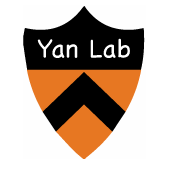Structural basis for the modular recognition of single-stranded RNA by PPR proteins
Type
Pentatricopeptide repeat (PPR) proteins represent a large family of sequence-specific RNA-binding proteins that are involved in multiple aspects of RNA metabolism. PPR proteins, which are found in exceptionally large numbers in the mitochondria and chloroplasts of terrestrial plants, recognize single-stranded RNA (ssRNA) in a modular fashion. The maize chloroplast protein PPR10 binds to two similar RNA sequences from the ATPI-ATPH and PSAJ-RPL33 intergenic regions, referred to as ATPH and PSAJ, respectively. By protecting the target RNA elements from 5' or 3' exonucleases, PPR10 defines the corresponding 5' and 3' messenger RNA termini. Despite rigorous functional characterizations, the structural basis of sequence-specific ssRNA recognition by PPR proteins remains to be elucidated. Here we report the crystal structures of PPR10 in RNA-free and RNA-bound states at resolutions of 2.85 and 2.45 Å, respectively. In the absence of RNA binding, the nineteen repeats of PPR10 are assembled into a right-handed superhelical spiral. PPR10 forms an antiparallel, intertwined homodimer and exhibits considerable conformational changes upon binding to its target ssRNA, an 18-nucleotide PSAJ element. Six nucleotides of PSAJ are specifically recognized by six corresponding PPR10 repeats following the predicted code. The molecular basis for the specific and modular recognition of RNA bases A, G and U is revealed. The structural elucidation of RNA recognition by PPR proteins provides an important framework for potential biotechnological applications of PPR proteins in RNA-related research areas.

